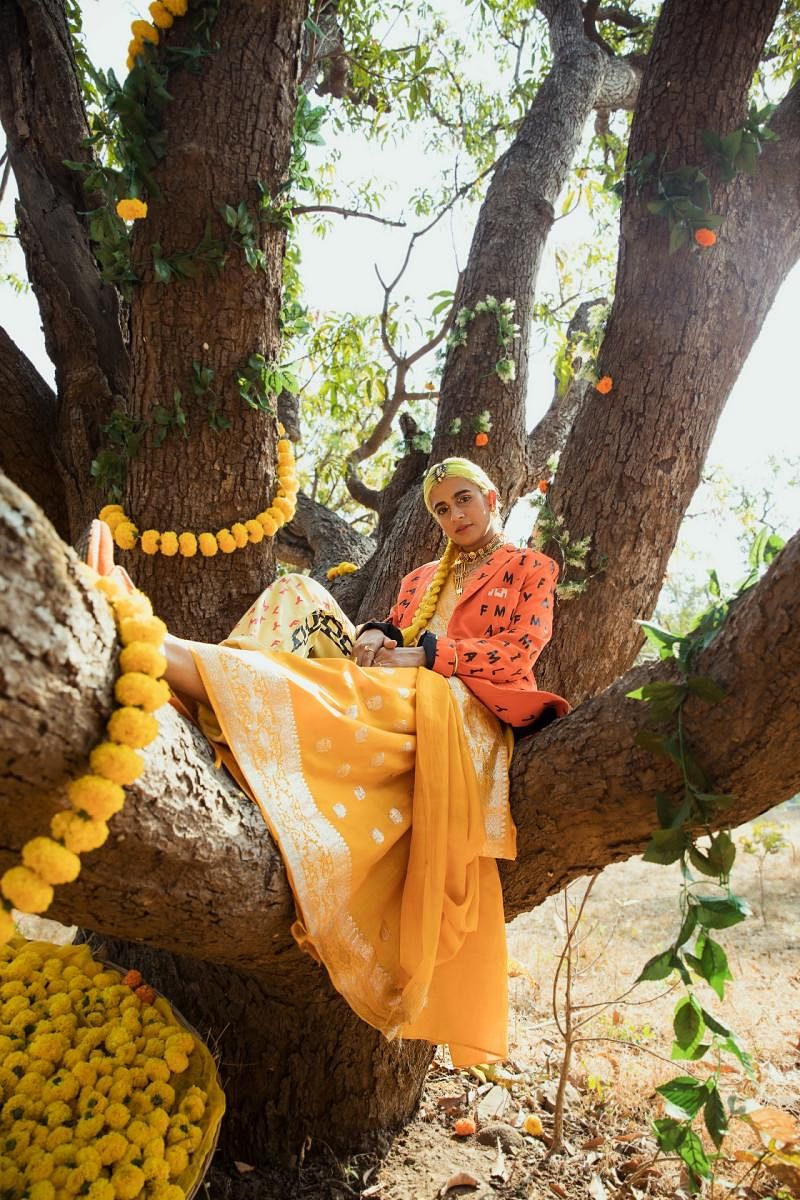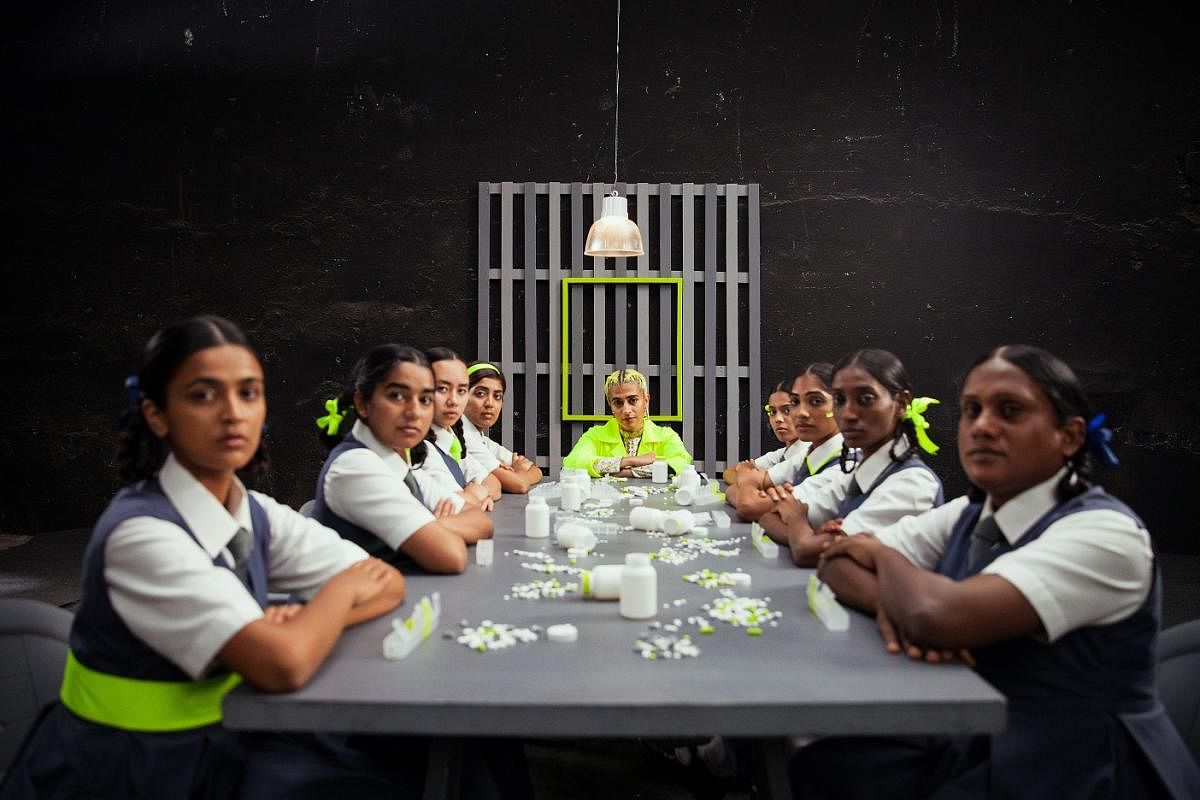

Stigma is one of the most effective forms of oppression, because it denies us the vocabulary to talk comfortably and confidently about our own bodies…’
The relationships we have with our bodies are largely dictated by the societies we live in. Anything slightly deviant from the image of the able white-bodied man has, more often than not, fought its own narrative of oppression. These are not simply quotes, but the initial lyrics of Madame Gandhi’s latest single ‘Waiting for Me’.
Dropped on the last day of Pride Month (June), the song is a lyrical and visual tale that speaks of liberation from various kinds of oppression. Directed by Misha Ghose, ‘Waiting for Me’, has been conceptualised and produced by an all-women team and features queer, trans, female and gender non-conforming cast members and marks Madame Gandhi’s first-ever video shot in India.
Kiran Gandhi, known by her stage name Madame Gandhi, attended her first concert in 1997, as an eight-year-old in Mumbai. “My mom took me because she knew I loved music — it was a concert by Savage Garden! I used to always choreograph dances in my school, order soundtracks from Amazon (like Buffy, the Vampire Slayer), make mini disc mixes and learn the lyrics of songs in Bollywood musicals such as Kal Ho Naa Ho and Dil to Pagal Hain. It was an awesome three years in Mumbai and inspired aspects of my music video,” says the US-based Gandhi, who is today a renowned name in electronic music.
Artiste-activist
From then on, her embodied experience as a brown woman living in the United States and the many systemic, institutional forms of injustice she came across, propelled Gandhi to become an activist. As an artiste, percussionist and producer, Gandhi uses her music to subvert normalcy; to elevate and celebrate gender liberation. She toured as the drummer for M.I.A., Thievery Corporation and most recently with Oprah on her 2020 Vision Stadium Tour. In 2015, she ran the London Marathon, bleeding freely to combat period stigma around the world, sparking a global viral conversation about how we treat menstruation in various cultures. Her song, ‘The Future is Female’, reached number eight on the Spotify Viral US Charts, following the 2017 Women’s March. She has released two short-form albums, Voices (2016) and Visions (2019), accompanied by a series of music videos produced and conceptualised by women and gender non-conforming creatives. Gandhi is currently working on her third short-form album, Vibrations, which is expected in 2021.
Gandhi’s educational qualifications would also seem rather peculiar to one, with degrees in Mathematics, Gender Studies and Business. “I just studied what I loved, which ended up being what I was good at! I, of course, use my gender degree daily, and I’d say I use my math degree when producing music, or studying the data in my own fans’ streaming patterns. This allows me to lead my team better and manage the direction of my music projects as responsibly as possible,” she says.
She goes on to claim that her music is a form of self expression for her, as she is not interested in making commercial pop, nor is she making it.
Primarily a percussionist, she writes her lyrics and melodies like a drummer; using few note varieties, but delivered in a rhythmically unique way.
Music for dissent
It is imperative to remember that if one’s art is derived from the immediate surroundings, it should also actively voice the injustices that exist in it. In the aftermath of George Floyd’s murder by a Minneapolis police officer, the Indian artistic community was heavily criticised for romanticising the Black Lives Matter movement, while ignoring the mistreatment meted out to the minorities in their own country.
Gandhi responds: “It is not okay. We have to take responsibility for our own backyard! We have to also realise that colourism deeply plagues us in India and none of us are free until all of us are free.”
So then, how does one use music or art for dissent? Says Gandhi: “We, as artistes, have the power to use our art to vividly re-imagine the world we wish we live in. With the interconnected social justice movements happening around the world, we are seeing a larger belief in the power of the collective to bring about a change.
This music video is a call to action for each of us to examine how hierarchy, capitalism and systemic oppression serve to keep us obedient, with little space for dialogue or critical thinking. My hope is that this video inspires folks to ask, ‘Are my behaviours contributing to the oppression of somebody else? And what contributes to my own oppression? What does my version of freedom look and feel like?’” Each of her videos show different aspects of her message. If some are queer focussed, others are notes on freedom; some are all about women while others speak of self-improvement. “I see music videos as a huge opportunity to teach and educate,” she signs off.